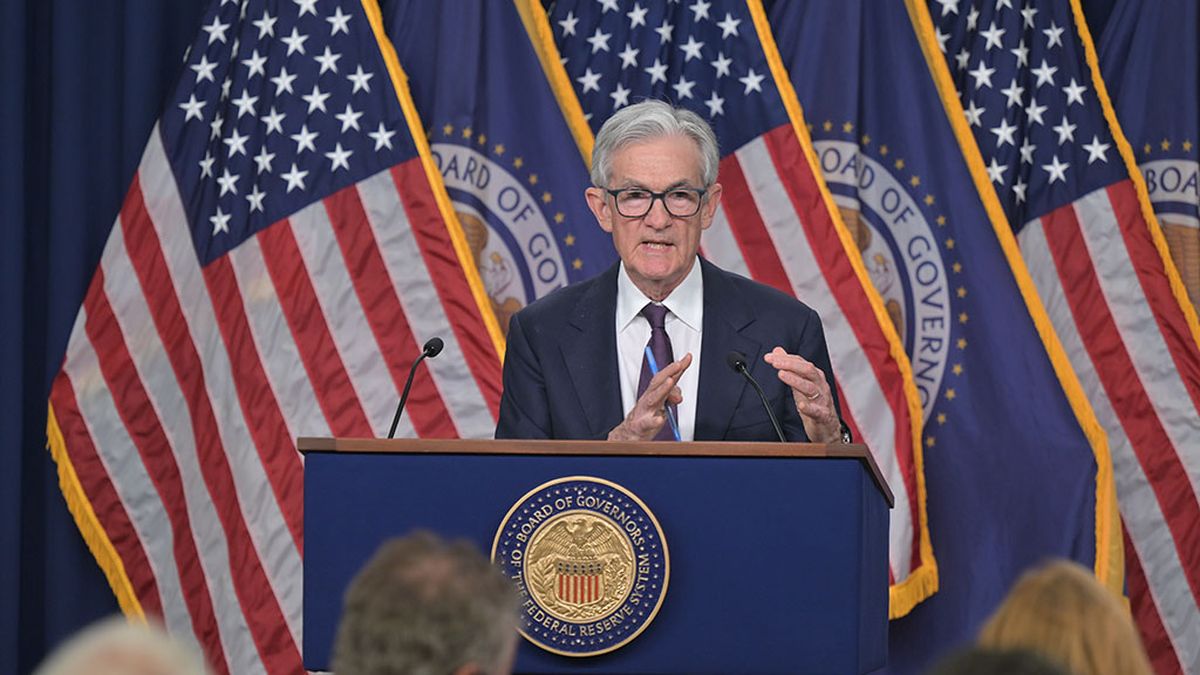The president of the Federal Reserve (Fed), Jerome Powellhe will speak this Friday in the traditional symposium of Jackson Hole and the Market awaits definitions on US monetary policy. The great unknown is whether it will give a rate of rate cut, in a context where the latest economic data show an ambiguous panorama regarding the impact of tariffs. At the same time, inflation remains high and Donald Trump’s political siege intensifies on the head of the Fed.
If during his speech the president of the Fed adopts a more pessimistic vision of the labor market, that could open the door to a reduction of rates at the next meeting of the agency in September. However, It is also likely to maintain the cautious tone you had throughout the year.
He CEO of Front Inversiones, Alan Mac Carthyhe explained to this media that “although so far the Fed kept caution, The latest US labor data were worse to what was expected and could push a turn“. He considered that” if a change of tone is confirmed, The door could be opened to a cut in September, although moderate“
And he added that “Everything will depend on whether Powell acknowledges that the labor market is no longer so firm and the high probability that tariffs begin to be reflected in inflation. “
For its part, Head Wealth Management Research in Balanz, Nicolás Kohnhe told the scope that Powell “Validate a data dependent position to execute the cut in September“
Anyway, he recalled that “until the price index data to the producer of July in the United States last week, The market already gave almost because the Fed would cut its monetary policy rate In 25 basic points at the September 17 meeting, particularly after the downward review in the employment data known at the beginning of the month. “
The change of humor in the market
On August 1, the labor statistics office of the Department of Labor (BLS) announced that Employment slowed down much more than expected and June data was corrected down. Wall Street shot after the noveltysince he interpreted that Bad data would spill in a cut During the September meeting, since the Fed must ensure both inflation and on the level of employment.
However, Kohn emphasized that “the strong surprise in the upward prices of the United States emphasized cutting cuts this year.” A week ago, The market gave 92.1% probabilities that the Monetary Central Bank reduces the rate in September 0.25, according to the Fedwatch that measures CMA. Wednesday was 82.4%. This Thursday dropped to 71.5%.
Fed Federal Reserve.jpg
The Fed was characterized by a cautious tone so far this year.
Federal Reserve
The persistence of inflation
Wholesale inflation was 0.9% monthly in July, The highest in three years. Which suggests that US companies are adjusting prices to compensate for the impact of tariffs, a decision that could move on retail inflation over the next months.
He Julio IPC was 2.7% year -on -yeara better data at 2.8% expected by analysts. However, It remains well above the goal of 2% that the monetary authority was set. The senior Research Strategy of Pepperstone Michael Brown explained in a recent report to its clients that retail inflation remains above that goal “During the last 53 consecutive months, which marks the third longest period in the last five decades”.
Brown He stressed that if the preferred indicator of the Fed To measure inflation, the basic pricing index of personal consumption spending (CPE), “a uglier panorama is obtainedsince the index remained above the 2% target for 52 consecutive months, before the July report that will be published at the end of the month, which marks The second longest period since the early seventies“
Does the labor market decelerate?
Waiting for the July employment data to be known, which will be published on September 5, the main labor market thermometer in the US is the applications for unemployment subsidy. It is an indirect indicator of the employment levelsince if there is an increase in hiring, The level of renovations tends to lower.
This Thursday it was learned that the new requests were 235,000about 9,000 above the anticipated and 11,000 above 224,000 of the previous week. While, The renovations of these subsidies reached 1,972,000 peopleabout 12,000 more than estimated people and an increase of 30,000 against the previous week.
Despite that, Brown argued that unemployment remained below 4.5%, the goal set by the Fed, “for 45 consecutive months, The longest streak since at least 1970“. By case, in July of this year it was 4.2%.
For that reason, he argued that “Recent data reinforce the opinion of the majority of the members of the Federal Open Market Committee (FOMC) that the inflationary aspect of the dual mandate (of the FED) is further from being achieved than the employment component. “
What will the Fed do in September?
Brown said that “all this contributes to reinforce the attitude of ‘Wait and see’ that has become the distinctive seal of monetary policy this year.” For that reason, he considered that Powell Surely “reinforces this message in your inaugural speech in the Jackson Hole symposium on Friday” and that the Fed will only cut the rate in December.
On the other hand, Kohn explained that from Balanz they hope A “base scenario is a cut (25 basic points) in September and another of the same magnitude in December”. And he deepened: “We believe that the Fed will be more cautious in 2025 and would have more space for cuts in 2026”.
Source: Ambito




